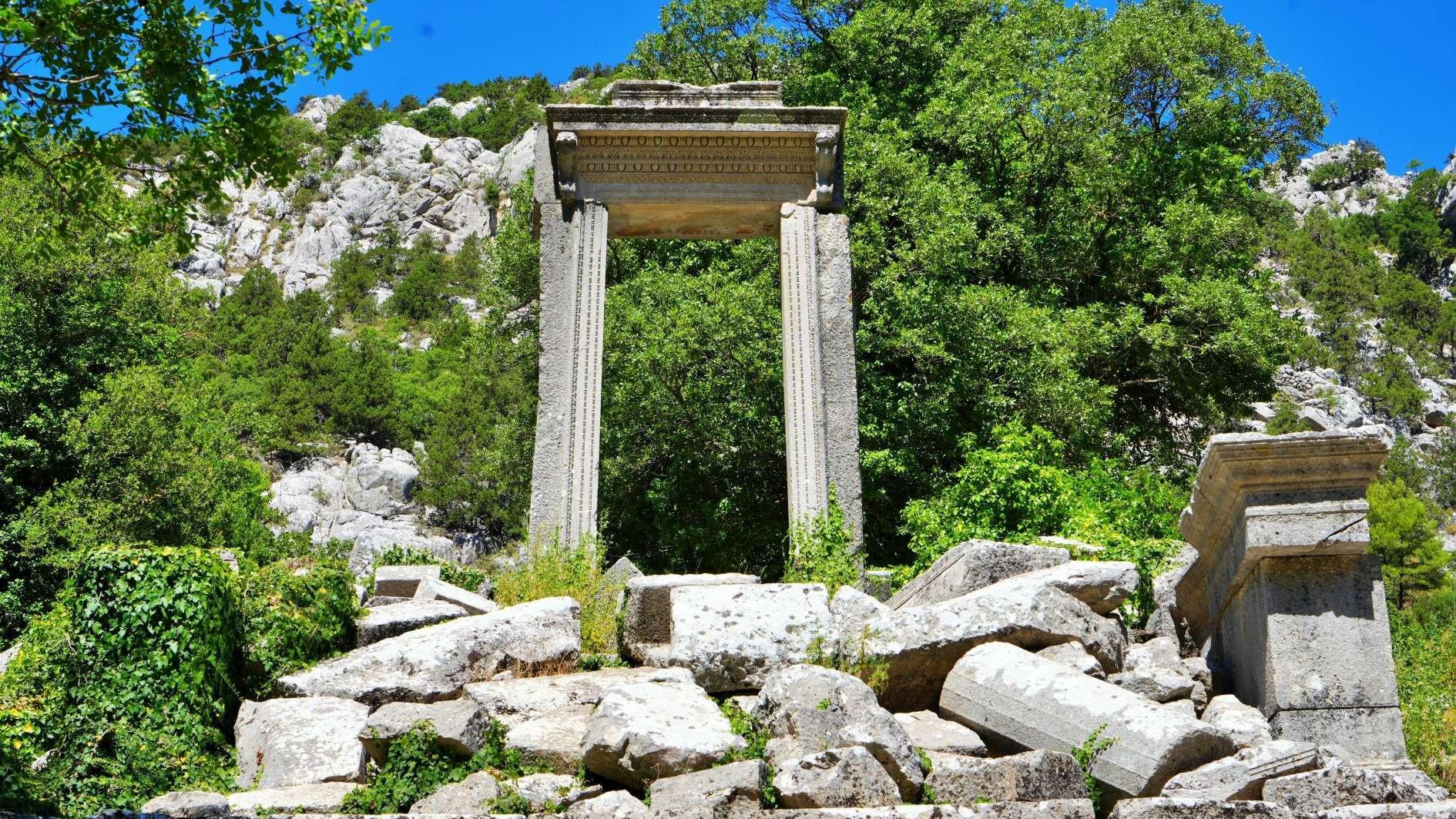
The ancient city of Termessos in the southern province of Antalya has launched its first systematic archaeological excavations this year.
Led by Associate Professor Mustafa Koçak of Antalya Bilim University, the project’s initial focus is on restoring a monumental tomb whose scattered stone blocks still lie intact around the site.
“This place had never been excavated before. We’re fortunate to be the first,” said Koçak. “We have nearly all the original stones. By documenting and reassembling them, we aim to show visitors what an ancient mausoleum actually looked like.”
Founded by the Solymians, believed to be descendants of the Luwians — one of Anatolia’s oldest peoples —Termessos is known for its fierce independence. Historical sources say that when Alexander the Great tried to capture the city in 333 B.C., he retreated without attacking due to its impenetrable location and strong fortifications.
Located within the forested Güllük Mountain National Park, Termessos is not only an archaeological treasure but also a haven of biodiversity. Its flora and fauna make it feel like an open-air museum and botanical garden. Visitors stroll among ruins to the sound of birdsong, with birdhouses affixed to trees blending nature with history. This year, two fox cubs were also released into the area.
The ancient city’s remains begin near Yenicekahve with Hellenistic walls and continue up the mountain. Inside, visitors encounter the Hadrian Temple, a gymnasium, agora, council house, theater, cisterns and various tombs and temples. One highlight is a monumental tomb dating to 319 B.C., thought to belong to the military commander Alketas, offering insight into the city’s martial identity.
“This is one of the best-preserved ancient cities near Antalya, only 30 kilometers away,” Koçak said. “Termessos has been left untouched since its abandonment. After becoming a national park in the 1960s, its protection reached the highest level.”
He described its strategic geography: “It is like an eagle’s nest, encircled by cliffs. Gaps were sealed with defensive walls. It was rarely attacked throughout history, and the local people were warriors — shields, armor and spears are commonly depicted on tombs.”
A mausoleum rises again
The main excavation this season targets a monumental tomb built atop a high podium. “It once contained several marble sarcophagi. We’ve created stone fields, documented and numbered every block. Now we’re clearing the area,” said Koçak. “After the dig, we will reassemble the tomb to offer both a scientifically accurate reconstruction and a powerful visual experience for visitors.”
Beyond the mausoleum, the team will also work on the necropolis road, ancient water structures and the Hadrian Gate. “Termessos is known for its vast necropolises,” Koçak noted. “One main necropolis road stretches 400–500 meters, lined with tombs and sarcophagi, many toppled. We’ll restore podiums and reassemble them. Two waterworks structures will also undergo cleaning and repair.”
Another focal point will be the Hadrian Gate, dedicated to the Roman Emperor. “Right behind it stands one of Anatolia’s grandest temples — dedicated to Artemis and built in the second century B.C. We plan to begin excavating that area this year as well.”
Koçak concluded by highlighting Termessos as a year-round destination. “Even when it is 35–36 degrees in Antalya, it is 6 to 7 degrees cooler here with a refreshing breeze. Fewer visitors come in summer, but spring and fall are ideal. Every turn of the path offers a ruin. Termessos is a treasure waiting to be discovered in every season.”